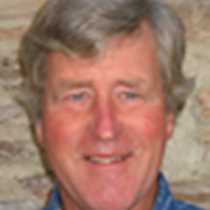Lemaire Channel and Booth Island, Antarctica
Bright sunshine was squeezing its way in through the portholes of National Geographic Explorer this morning at 6:00a.m. when Lisa called on the intercom to inform us we were starting our passage through the Lemaire Channel. This stunningly beautiful passage between Booth Island and the mainland of the Antarctic Peninsula looked exceptionally spectacular in the warm early morning light. We were heading south through the channel on smooth water, there were surprisingly few icebergs in our way, and the day was shaping up to be another good one. In no time at all we were turning into the large bay at the south end of Booth Island referred to as the iceberg grave yard. The area lived up to its name, being packed with vast blocks of ice of all shapes and sizes. Quite remarkably, Captain Oliver Kruess calmly negotiated a passage through this ice to our anchorage close to the shore at an area referred to as Port Charcot.
On offer this morning were the options of Zodiac cruising amongst the icebergs or going ashore on the southern tip of Booth Island to visit the liberal smattering of nesting penguins and climbing a hill to the cairn that Charcot built almost 110 years ago. Here on Booth Island, in a small cove on the southwest side of the Island, Jean-Baptiste Charcot overwintered with his ship Français in 1904-5. The views from the cairn are truly breathtaking, and today the ice-covered mountains bathed in sunshine were outrageously beautiful.
From the high vantage point of the cairn we were able to watch the Zodiacs cruise amongst the icebergs on the turquoise sea below. There were minke and humpback whales and thousands of penguins swimming beside the Zodiacs which could also be seen from up there. On our return to the ship a polar plunge was on offer and a surprising number of hardy folk willingly jumped into the icy waters beside the icebergs.
After lunch our ship hauled up her anchor and we started heading south along the Grandidier Channel past Peterman Island, the location of Charcot’s second over-wintering. Further on we passed the Argentine Islands upon which could be clearly seen the buildings of the Vernadsky Station, the scientific base belonging to the Ukraine. On we went further and further south, past numerous islands until we reached a vast open area of sea referred to as Crystal Sound. A sudden shake of our ship told us we had reached sea ice. The area to the south appeared to be solid ice as far as we could see. National Geographic Explorer cut through this ice like a hot knife through butter, as it was all relatively soft one-year ice.
Along the way many crabeater seals were seen laid out on the ice, basking in the sun. Ahead thicker ice looked as though it would force us to retreat but again we found a way through, finding open water and raising our hopes that we might reach the Antarctic Circle (66 ̊33’S) later tonight. What an amazing day it has been!




